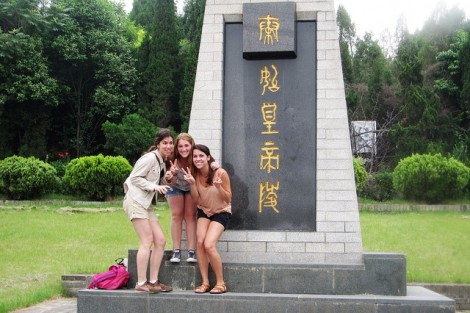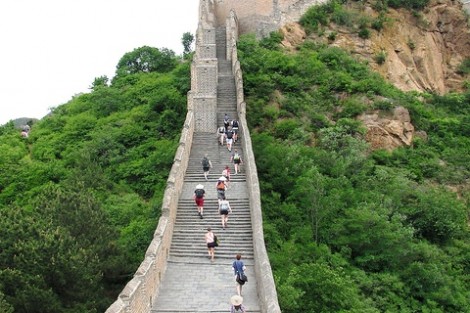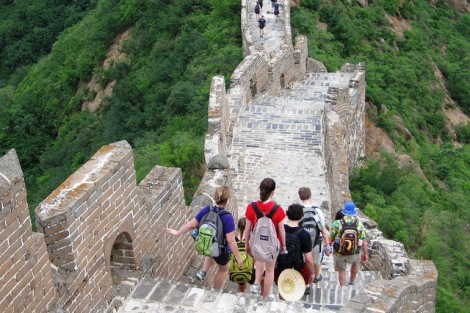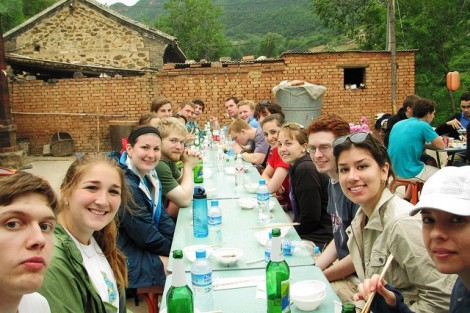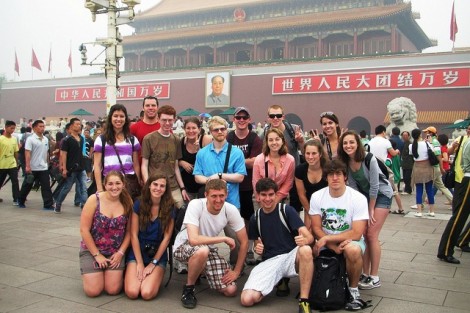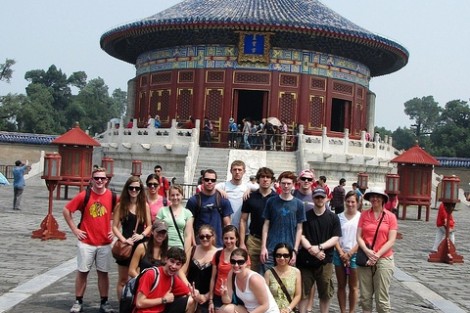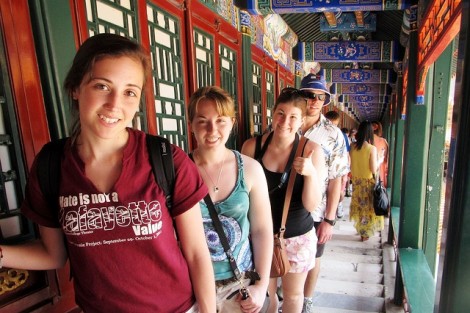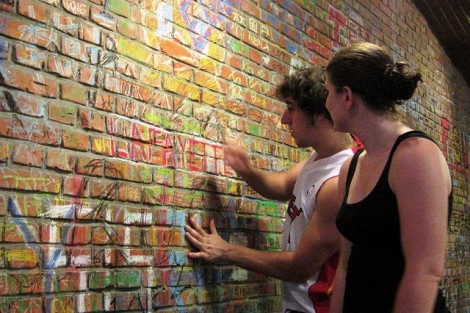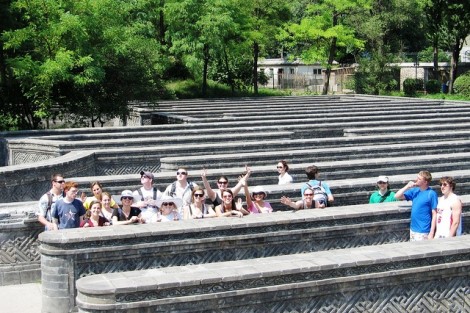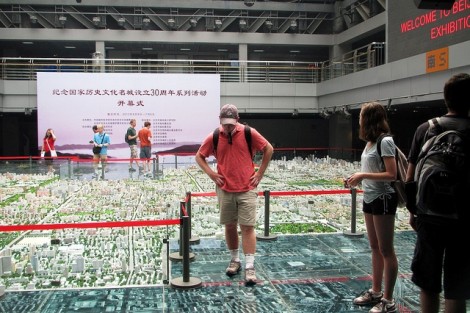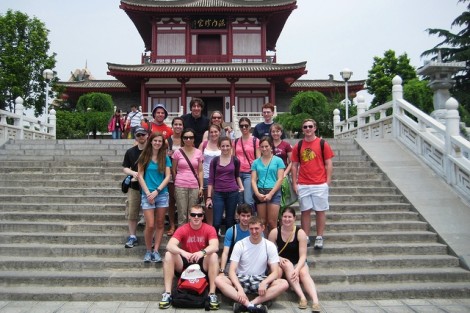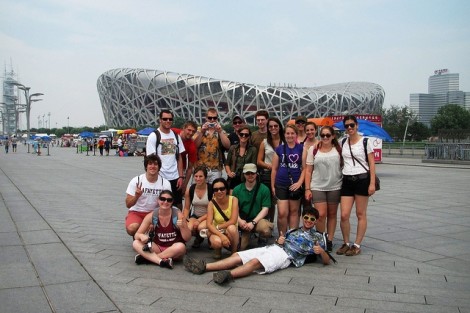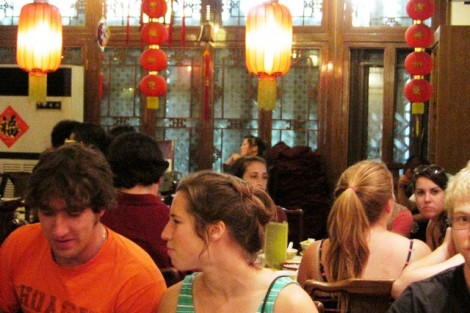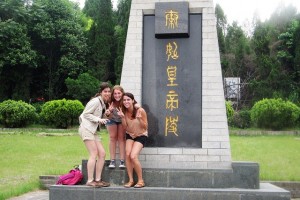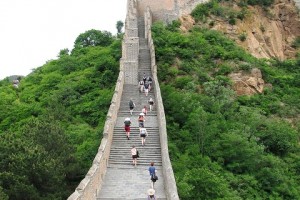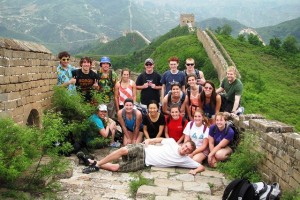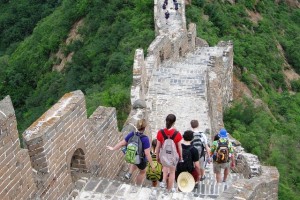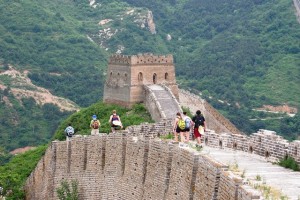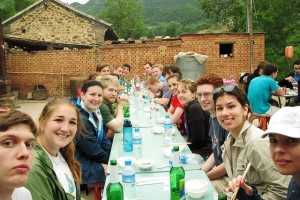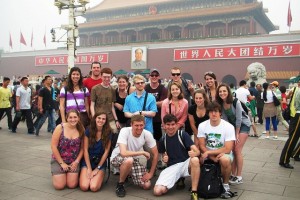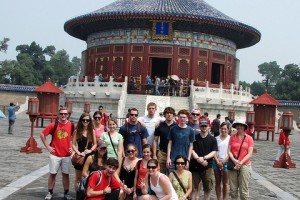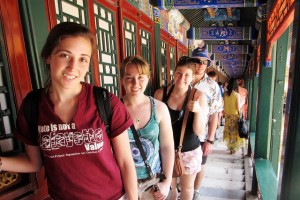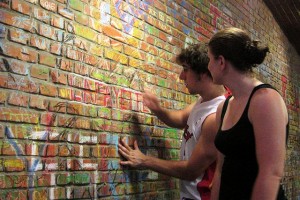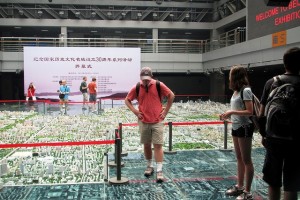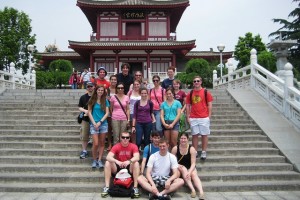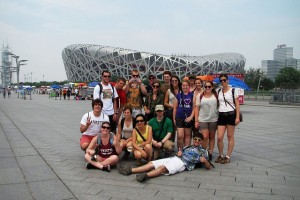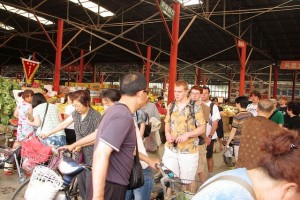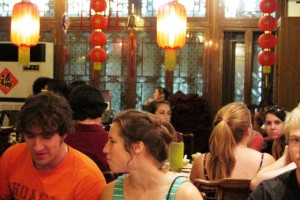You can read about the Great Wall of China in a textbook or trace its path on a map, but if you really want to get a feel for the Great Wall, nothing compares to setting foot on it.
“After learning about the wall through our readings and research, it was surreal being able to stand on it,” says Megan Goodman ’14 (Millwood, N.Y.), who did just that this summer as part of a short-term study abroad course led by Li Yang, assistant professor of foreign languages and literatures, and Ingrid Furniss, assistant professor of art.
View and share more images from the China course on Flickr
“The study of foreign history and culture is much more effective when you are on site,” says Yang. “I can still remember how we discussed the function and symbolism of the Great Wall when we were actually on the Great Wall. That was just superior to any classroom experience for me.”
Furniss, a specialist in ancient Chinese art and archaeology, was eager to provide this kind of first-hand experience of the history, monuments, and works of art that she teaches in her classes.
“Seeing monuments and works of art in their original context,” she says, “provides a much more powerful experience than viewing them in a slide show.”
The course, China: An Ancient Civilization and a New Global Power, had a dual focus on historical and contemporary issues, with visits to both ancient and modern landmarks.
“The two aspects complement each other very well as the reading of history often helps students understand why China is the way it is today,” Yang says.
The 21-day journey through China included visits to historical sites, tombs, temples, and museums in and around the cities of Xi’an and Beijing, and was designed to introduce students to Chinese cultural history, current economic development, and social life.
At the end of their 6-mile Great Wall hike, the group walked to a small village about a mile away, where the students enjoyed a homemade Chinese dinner and slept in traditional Chinese Kang-style beds.
The trip balanced planned excursions with lectures and discussions, as well as free time for exploration, reading, and completing assignments.
The students brought different academic backgrounds to the course and could tie their own interests to the topics covered during the trip. Throughout the course of the study, students were required to present on topics such as the first emperor of China, the Great Wall, Chinese family, and Chinese food.
“Delving into such topics was one of the most important components of the trip,” says Furniss. “Students seemed very inspired by their topics, and their presentations often drew not only on their research but also on their own experiences of Chinese culture. These presentations provided the basis for many fruitful discussions about Chinese history and everyday life throughout our trip.”
Furniss helped plan and lead an interim trip in 2011 to Egypt, and Yang and Furniss were able to build on that experience while planning the China trip.
“With China’s fast development and growing international presence in recent years, I felt that Lafayette students would benefit immensely from visiting the country. I also hope that a regularly scheduled China interim trip would help to promote China and Asian studies on campus,” Yang says.
The course fit well with Goodman’s major in international affairs and minor in Asian studies. She has studied Chinese for two years at Lafayette.
“This course has helped me realize how much I enjoy learning the Chinese language, and now I plan to study in China for a year after college in hopes of becoming fluent in the language. I am so thankful for this opportunity, and will never forget it,” Goodman says.
Cody Zaccagnino ’13 (South Salem, N.Y.) was able to use his Marquis Scholarship study abroad funding to take the China course. He was surprised by the similarities between China and the United States.
“Aside from the language barrier—which, I have to admit, was an enormous barrier—Beijing was similar to New York, complete with tons of Chinese tourists. However, the more I interacted with Chinese people, the more cultural differences I could spot. The humor, the concept of family, and the way everyone smokes were all very different. Also, another surprise to me was that in general, the Chinese have a lot of national pride, not unlike Americans.”
Zaccagnino’s essay topic for the course was the evolution of Chinese architecture, so he was particularly interested in both the ancient sites (such as the Forbidden City, the Temple of Heaven, and the Great Mosque of Xi’an) and modern buildings (such as the CCTV Headquarters, the 2008 Olympic complex, and the Beijing National Theater) on the itinerary.
“I made it a point to research all the amazing structures and sights there are in Xi’an and Beijing so that when we visited them, I could have a greater understanding of the architecture and engineering involved in creating the structures,” says Zaccagnino.
History major Adam Gill ’14 (Wayne, N.J.) also found the experience enlightening.
“I gained new insight into a foreign culture and observed the evolution of the Chinese people. We were able to explore the architecture and history of an ancient culture and how it developed into the modern world,” Gill says. “This trip helped to expand my interest in history by introducing me to an area of the world I had not previously studied. It also helped expand my cultural awareness and allowed me to learn about another culture.”
